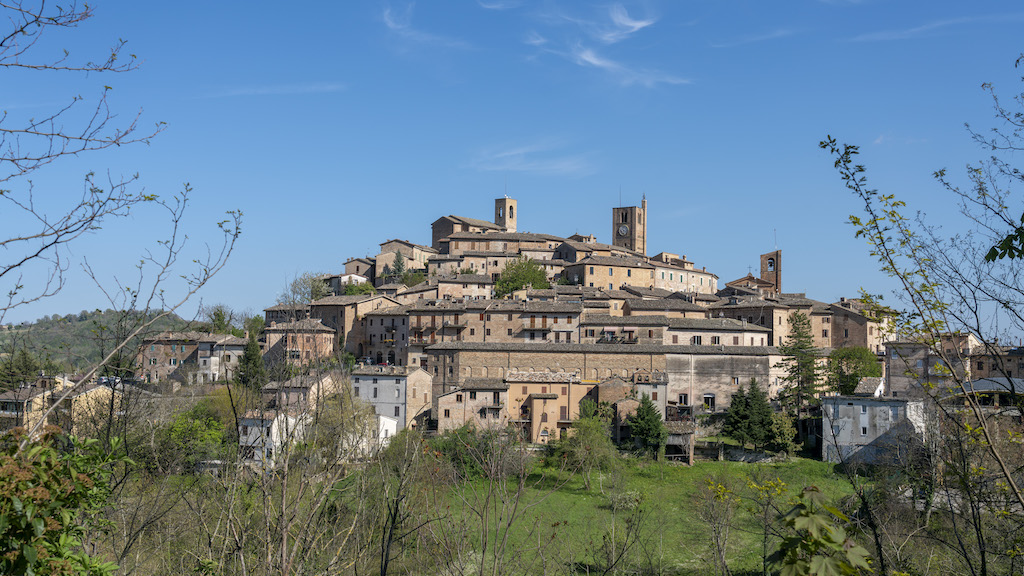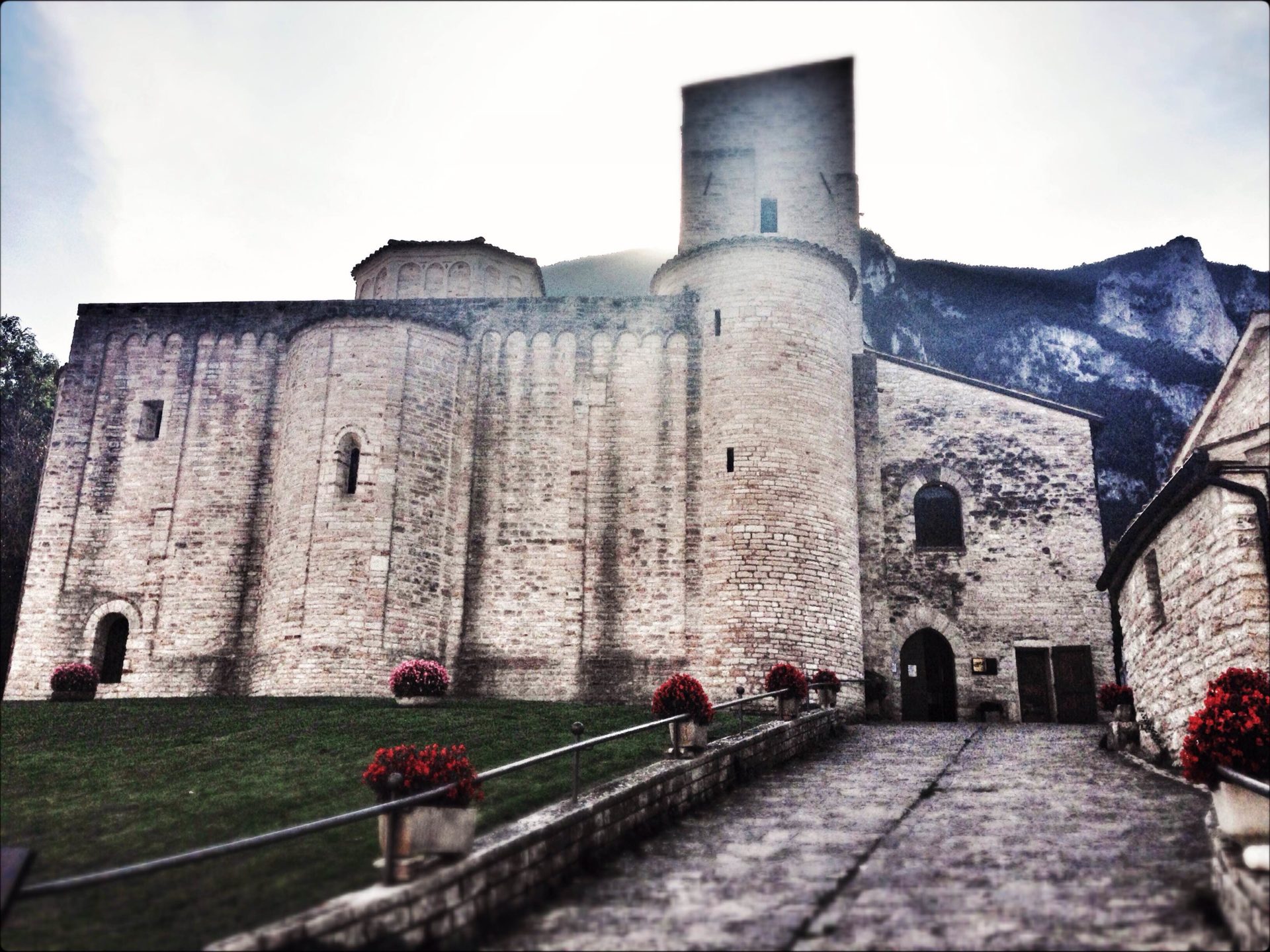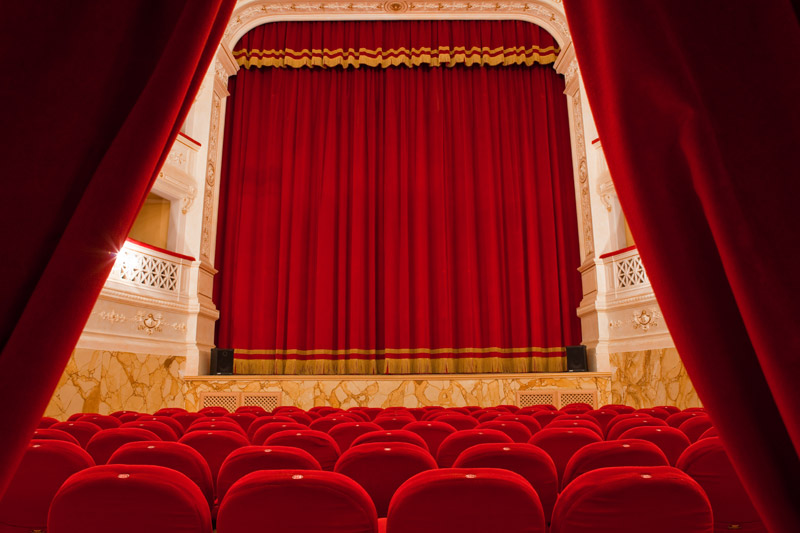Fonte Avellana: participation and spirituality
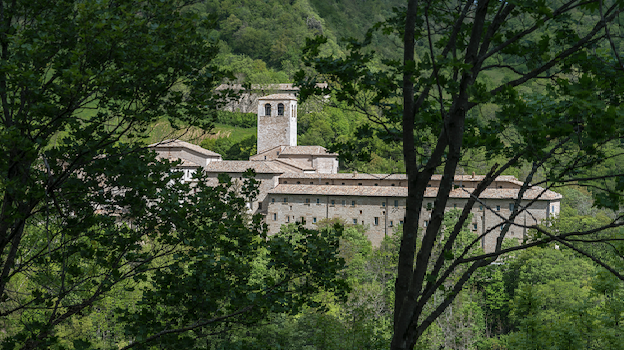
A suggestive landscape, a secular history; what is its function nowadays?
What is religion?
One should never forget that religion is a cultural issue, a set of decisions and conventions accepted in time which sets paths meant to organize the everyday life through moral principles. It enables the members of a given culture to understand and face the unknown.
What is the use of spiritual paths nowadays?
In an incessantly changing society, in the chaos and disorder of the global hurry, in the breathless race against time, giving oneself an escape from the harassing everyday routine, a return to one’s self, a moment of intimacy with one’s Ego and a contact with nature are now necessary more than ever.
How can this need be satisfied?
A possible way is to spend some time into one of many existing monastic communities, which welcome their guests and silently perform traditional activities related to the religious order they belong to.
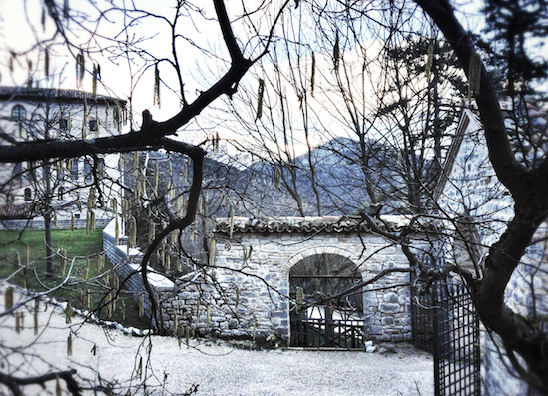
Marche: itineraries of monasticism
Many monasteries have been built, often not far from each other, since the VII century, on the path of the ancient Roman roads. An even greater number of abbeys rose on our territory since the middle ages. They are an architectural, archaeological, cultural and environmental patrimony and deserve protection and promotion. These buildings which look very much like fortresses, built in the valleys, on hilltops or in the middle of woods and forests, were ideal for defence, solitude and contemplation.
L’Eremo di Fonte Avellana
Marche boast the presence, on their territory, of a monumental religious building: the Hermitage of Fonte Avellana. Where is it?
«Twixt either shore
Dante, Divina Commedia, Canto XXI del Paradiso
Of Italy, nor distant from thy land,
A stony ridgeariseth; in such sort,
The thunder doth not lift his voice so high.
They call it Catria: at whose foot, a cell
Is sacred to the lonely Eremite;
For worship set apart and holy rites».
So poetically described by Dante, the monastery rises , 700 metres above sea level, on the rocky east slopes of mount Catria, in a locality called Serra Sant’Abbondio, into an immense natural environment where men face their smallness. The hermitage owes its name to the hazelnut trees (avellane) which crowd the woody area.
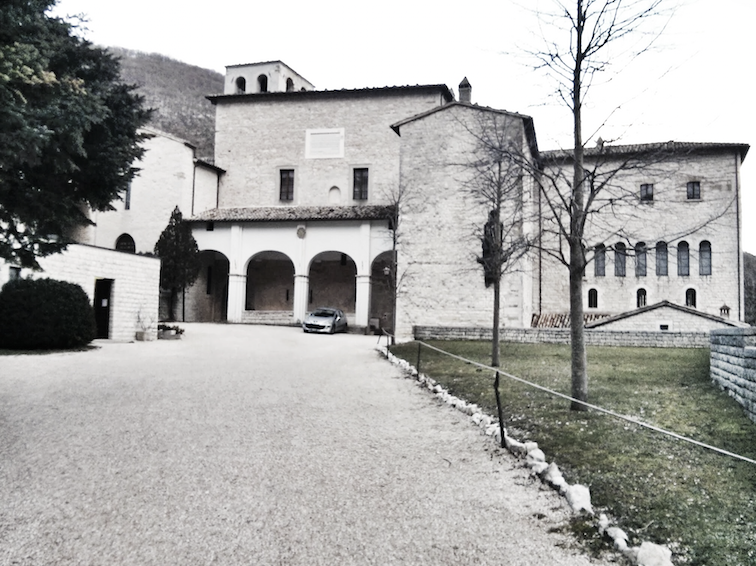
Founded in 980, presumably by St. Romualdo di Ravenna who also founded the Camaldolese Benedictine congregation, the monastery got an important spiritual development under St. Pier Damiani. In 1139 it was officially accredited by pope Innocent II. Dedicated to the holy cross, the hermitage boasts a magnificent scriptorium built under St. Pier Damiani. Its dimensions follow the golden ratio; there amanuensis copied books and transcribed codex.
The structure includes an ample botanic garden and hosts an ancient pharmacy, where medicines are produced from herbs according to the Camaldolese tradition.
Hospitality, study, prayer and work keep characterizing the life of monks in the hermitage.
A holiday in the hermitage
Which are today the typical aspects of life for the friars? What is their relationship with the outside world? Here are the answers to these questions by visitors who were hosted there.
How were you received?
“The hospitality of the Camaldolese friars was very cordial, quiet but warm. We met practically all the people who live in the monastery and interacted with them all”
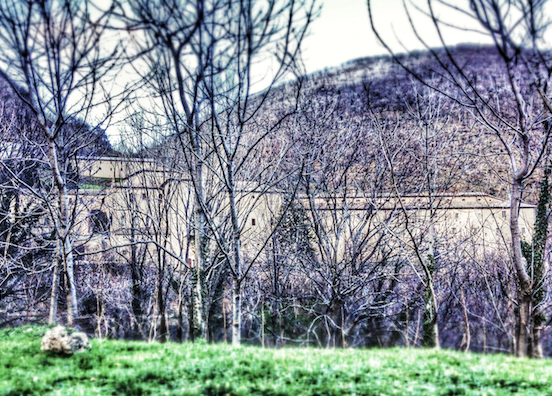
Were you in contact with the monks during the day?
All along our stay we actively joined the monks in all aspects of their working day and praying moments. We could freely access the libraries and the offices where they performed their activities and could talk to them any time, also privately, both about religion and ourselves. We felt like we were listened, never judged”.
Which parts of the monastery did you visit during your stay?
“Es“Since we had the lucky chance to be in Fonte Avellana in a calm period of time, we could visit most of it. Our guides enthusiastically told us about history, anecdotes and curiosities of the place, with special attention to the role of the scriptorium and the diffusion of manuscripts. Also the most ancient part of the library is important: many precious volumes are kept there, including works by Dante Alighieri.”
What does Dante mean to the monks?
“Dante is clearly very important to them. An inscription on the facade of the monastery, reproducing a verse of Paradise, leads scholars to suppose that Dante might have stayed there. Some friars told us that he may have taken shelter in the monastery to escape a persecution”.
What did this experience mean to you?
“It was certainly a very intense experience. I suggest it to everybody, because the Monastery of Fonte Avellana is a place magical and rich with spirituality which offers the chance of enjoying a stay in a real monument, a place like no other in the world.
di P. Donatiello
